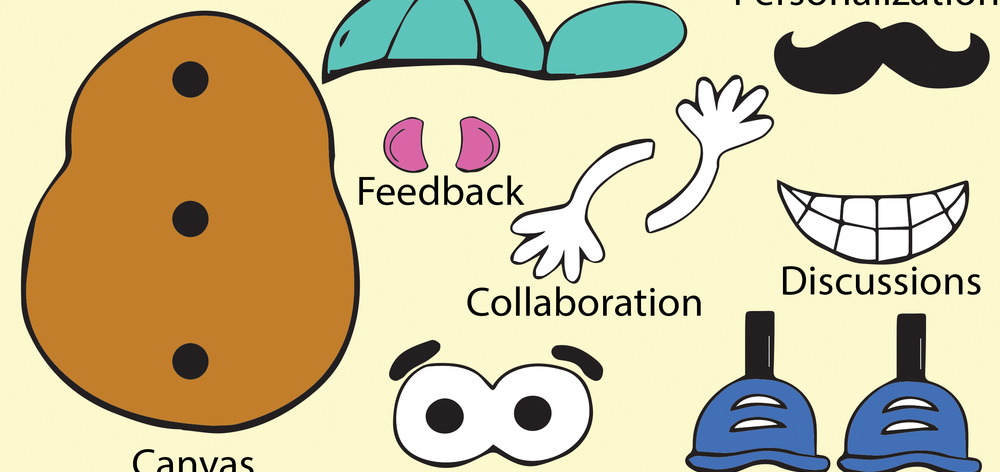
I recently joined Missouri Online as an Instructional Designer after spending 9 years as a digital media instructor at a 9-12 high school in central Missouri. Like many of you can likely relate, during that time I’ve seen a great change in the way we educate our students. Fast forward to March 2020 and the COVID-19 pandemic again forced educators around the globe to change the way they were educating students and while asynchronous learning wasn't relatively new for higher education institutions, it still posed some great challenges in keep students engaged and motivated.
I know what you’re asking...what, if anything, does this have to do with instructional design? Remember Hasbro’s Mr. Potato Head? If you’re anything like my family, you likely still have one in a box somewhere in the attic. Designing an online course from scratch (or updating one) is much like putting Mr. Potato Head together. Canvas serves as the big, brown, potato-like structure that holds everything together. Everything else: the modules, assignments, images, videos, discussion boards, etc are all Mr. Potato Head’s accessories (arms, legs, shoes, eyes, that classic mustache), making each course just a little bit different depending on how the instructor chooses to put everything together. If you’re more of a straightforward instructor, you may just place all your resources in modules based on unit or week. However, if you want to challenge yourself a bit more, you may consider embedding interactive materials like images or videos into the pages to create a richer experience for your students. Regardless of how you choose to let your freak flag fly, I would encourage you to consider these four strategies:
Strategy 1: Involve the Learner: While this seems a bit obvious, in asynchronous courses, it is really easy to “default” to placing all the traditional content from a synchronous course (assignments, pre-recorded lecture videos, etc) into Canvas and calling it a day. However, numerous activities can fully engage online students. One I’m excited about right now is called a hyperdoc.
Strategy 2: Make Collaboration Work: What makes online courses difficult, is the lack of conversation and collaboration that comes so naturally in synchronous courses. As I found during the initial March shutdown in 2020, students can (and will) log into the course at times that are most convenient for them (and oftentimes it was 3am!). Actively using discussion boards in Canvas, backchannels, or Canvas groups are great ways to get students working together and increasing an online community of learners.
Strategy 3: Develop a Clear, Consistent Structure: Developing a structure for online courses saves headache and sanity for students, but most importantly yourself as an instructor. Canvas makes this really easy through modules. Modules can be designed by week or by unit of study and should contain all the relevant resources students need to be successful. This also allows you as the instructor to hide many of the links in Canvas’ left side navigation as students can access assignments, quizzes, files, discussion boards, websites, videos, etc directly through the module they are relevant to.
Strategy 4: Reflect & Revise: The last phase of the entire process comes at the end of the semester when you take a look at the course overall and evaluate the good, the bad, and the ugly. Just like feedback is important for our students to increase their learning, feedback is equally important for instructors to review at the end of the course. Student surveys and the QCR process are important tools for this phase to help ensure students are getting the most out of the courses you have put your time into developing and I look forward to opportunities to work with you during this phase!
For more information about the above strategies, check out this article by Amy Rottmann and Salena Rabidoux.
-Bryant “Laz” Lazenby, Instructional Designer
